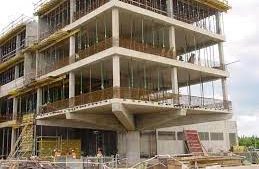Planted columns, also known as living columns or green columns, are vertical structures that incorporate live plants into their design. These columns not only serve as decorative elements but also provide numerous benefits, including improved air quality, increased biodiversity, and enhanced aesthetic appeal. In this step-by-step guide, we will outline the process of creating planted columns.
Step 1: Determine the Purpose and Location
Before starting the construction of planted columns, determine their purpose and the desired location. Consider whether the columns will be used for indoor or outdoor applications, and identify the specific area where they will be installed. Assess the environmental conditions, such as sunlight exposure and moisture levels, to ensure they are suitable for plant growth.
Step 2: Select Suitable Plants
Choose plants that are well-suited for the selected location and can thrive in vertical environments. Consider factors such as light requirements, temperature tolerance, and growth habits. Opt for plants with compact growth and shallow root systems that can adapt well to the limited space provided by the columns. Consult with a local horticulturist or plant expert to determine the most appropriate plant species for your specific climate and conditions.
Step 3: Design the Column Structure
Design the structure of the columns, taking into account the desired height, width, and overall appearance. The columns can be constructed using a variety of materials, such as wood, metal, or plastic. Ensure that the structure is strong, stable, and capable of supporting the weight of the plants and the growing medium. Consider incorporating irrigation systems or drainage mechanisms to provide adequate water supply and prevent waterlogging.
Step 4: Prepare the Growing Medium
Create a suitable growing medium for the plants in the columns. This medium should be lightweight, well-draining, and rich in nutrients. A mixture of compost, peat moss, and perlite or vermiculite is commonly used. Fill the columns with the growing medium, ensuring that it is evenly distributed and compacted to support the plants’ roots.
Step 5: Plant the Columns
Carefully plant the selected plant species into the columns, starting from the bottom and working your way up. Place each plant into a pre-dug hole in the growing medium, ensuring that the roots are adequately covered. Space the plants appropriately, considering their growth habits and the desired density of foliage. Gently firm the growing medium around the roots to provide stability.
Step 6: Provide Adequate
Care Maintain proper care for the planted columns to ensure healthy plant growth. Regularly water the plants, taking care not to overwater or allow water to accumulate in the columns. Monitor the moisture levels and adjust the watering frequency accordingly. Apply a balanced fertilizer to provide essential nutrients for the plant’s growth. Prune or trim the plants as needed to maintain their shape and control growth.
Step 7: Monitor and Maintain
Regularly monitor the health and condition of the planted columns. Check for any signs of pests, diseases, or nutrient deficiencies. Remove any dead or damaged plants and replace them with new ones, if necessary. Inspect the structure of the columns for stability and make any repairs or adjustments as needed. Periodically clean the columns to remove dust or debris and maintain their aesthetic appeal.
Step 8: Enjoy the Benefits
Once the planted columns are established and well-maintained, enjoy the benefits they provide. These include improved air quality, as plants naturally filter pollutants and release oxygen. The columns also create a visually appealing and inviting atmosphere, enhancing the overall aesthetics of the space. Additionally, the presence of live plants can attract pollinators and contribute to increased biodiversity.
In conclusion, planted columns offer a unique and eco-friendly way to incorporate live plants into architectural structures. By following this step-by-step guide, you can successfully create and maintain planted columns, benefiting from improved air quality and the aesthetic appeal they bring. These living columns add a touch of greenery to indoor or outdoor spaces, creating a refreshing and calming atmosphere.

